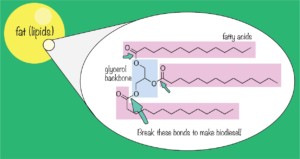Hurricanes decimating the Caribbean. Massive wildfires in Australia, leading to the near destruction of an entire species. Earthquakes and monsoons in southeast Asia. The thawing of previously frozen, ancient viruses melting from glaciers. There is no doubt about it: our planet will be irreparably and irreversibly altered by the impacts of climate change. The Intergovernmental Panel on Climate Change has included the generation of carbon neutral biofuels among the most significant approaches with which to mitigate some of the consequences of climate change and, most important, stall rising global temperatures. While there are many options for biofuels – including corn, soybean, canola oil, and palm oil – one source towers above them all: algae.
Here are the top 5 reasons that algae are crowned king of the biofuels:
1. Bioethanol, Biohydrogen, Biodiesel – algae does it all.
Bioethanol, biohydrogen, and biodiesel are all renewable fuel sources with their own unique advantages and disadvantages. While most biofeedstocks are proficient in one of these fuel sources (corn is better for ethanol, canola is better for biodiesel, etc.), algae is capable of producing all three sources at very high rates.
Bioethanol is produced when algae harnesses the power of sunlight to produce sugars, which can later be extracted and fermented to make ethanol to add to gasoline. However, while ethanol burns much cleaner than gasoline, it is much less efficient; for every one gallon of gasoline, you would need 1.5 gallons of ethanol to produce the same amount of energy. This means that when you use the 85% ethanol gasoline sold as most gas stations, you will only get about 75% of the fuel mileage that you would get from pure gasoline.
More efficient than bioethanol is biohydrogen, also produced by the algae’s use of sunlight. In the process of producing sugars, algae also produces a hydrogen gas byproduct that is important to ensure the proper functioning of photosynthesis. Hydrogen can be used to produce electricity that is much cleaner than coal or natural gas, but current technology is limited when it comes to storing and producing it at a large enough level.
Biodiesel, on the other hand, is on par with the energy efficiency of gasoline and can serve as a drop-in ready fuel source- meaning that it can replace diesel fuel completely without mixing with fossil fuels. By using a process

called transesterification, the bonds connecting fatty acids to a glycerol back bone are broken, generating a fuel source that would need little infrastructure changes while significantly decreasing the demand for fossil fuel production.
2. Algae grows incredibly fast
If you have ever had a fish tank, you know that algae can turn a perfectly balanced fresh water fish tank into a sludgy green mess faster than you can say, “Crossocheilus oblong.” This is because green algae divide incredibly fast, often creating four new algae cells for every one original cell. This means that algae grows 20–30 times faster than any of the conventional crops used for fuel production. On top of lightning fast growth, algae doesn’t require the herbicides and pesticides needed to maintain steady growth in crop fields, decreasing the growing cost and reducing the harmful chemicals used in the environment.
3. Algae has a low nutritional demand
In addition to not requiring herbicides and pesticides, algae doesn’t need the fertilizers typically used in croplands. Algae has two favorite snacks: carbon dioxide it pulls from the atmosphere and sunlight. While other nutrients are needed, algae are much more efficient at extracting nutrients than normal plants, and are able to sequester excess essential minerals to store in case of emergency. Once the algae has removed all the nutrients, it becomes nutrient-deprived… and responds by making more biofuel! During a process known as autophagy, cells degrade their proteins and other structures, generating more fats that are then used to make biodiesel.
4. Fresh water? No need. Algae like getting dirty.
Did you know that 70% of freshwater around the globe is used for agriculture? With entire communities spending years without access to clean water, there is a certain amount of moral ambiguity in using such a precious resource for fuel production. Algae, however, doesn’t just survive in dirty water, it thrives. Researchers have paired algae cultivation with urban wastewater treatment to generate the twofold benefit of both reducing the energy needed to clean water while simultaneously generating a feedstock for fuel production. Algae can even be fed off of the waste produced from other energy sources, such as flue gas from power plants or the glycerol produced when making biofuels. Worried about the waste generated from pig farms? Use it to feed algae. Have problems with heavy metals? Algae will take that, too. It is the waste disposal system of the aquatic environment.
5. No land, no problem
The United States uses 18% of its total land area for cropland (and 27% for pastures!). If we wanted to produce enough fuel to substitute all of our transportation fossil fuel use with renewable biofuels, we would need to use an area close to half of the United States with traditional feedstocks. Algae could produce the same amount of energy using a land mass just a bit larger than Maryland! Further, you could grow algae on the top of mountains, in the desert, or in concrete vats. It is truly a biofuel producing machine!
Peer edited by Brittany Shepherd